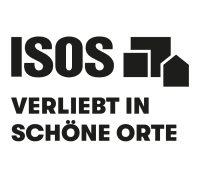La Chaux-de-Fonds
Intro
La Chaux-de-Fonds is not just known for its model chequerboard layout and watch industry, but is also the home of Le Corbusier and a UNESCO World Heritage Site.
La Chaux-de-Fonds at a glance
La Chaux-de-Fonds is situated at around 1,000 metres above sea level. Due to the harsh climate, very little settlement took place here until the Middle Ages. Nevertheless, the oldest human skeleton in Switzerland to date was discovered nearby. The original hamlet was founded at the beginning of the 16th century and gained in importance in the 17th century thanks to its strategic location. The watchmaking industry began to emerge around the same time – a pocket watch was documented as early as 1664. La Chaux-de-Fonds quickly took the leading position in watchmaking in the Alpine region.
On the night of 5 May 1794, fierce fires raged and destroyed most of the buildings. Following this tragic event, the town was rebuilt based on a rational, rectangular street grid with a largely uniform construction. Also in later years, the city was expanded like a chequerboard, which enabled optimum lighting for the watchmaking workshops in the mostly southeast-facing buildings.
Numerous bell towers, which reflect the cultural diversity of the place, and a few high-rise buildings from the post-war period mark out the city’s silhouette. La Chaux-de-Fonds is also the hometown of Charles-Édouard Jeanneret-Gris, better known as Le Corbusier. He built his first architectural masterpieces here. In 2009, La Chaux-de-Fonds was granted UNESCO World Heritage status, together with the neighbouring town of Le Locle.
ISOS
ISOS is the Federal Inventory of Swiss Heritage Sites of national importance. The inventory is maintained by the Federal Office of Culture (FOC) and lists the most significant settlements in Switzerland. Today, some 1,200 places are included in the inventory, from hamlets right through to cities. The inventory provides information on the development and identity of the settlements listed in it, thereby contributing to the preservation of architectural diversity in Switzerland and promoting both sustainable planning and a high-quality Baukultur.








